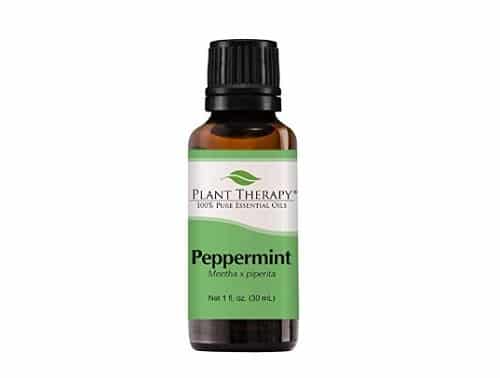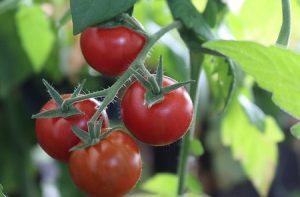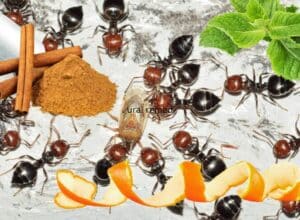Last Updated on October 18, 2023
15 simple, cost-effective, easy, do-it-yourself ways to get rid of insect pests naturally.
As a gardener you often wonder if you planted a garden to feed yourself and your family or to provide food for garden insect pests.
And if you planted a garden to feed yourself (as I assume you do ☺️), you are inevitably faced with the question:
How to keep bugs from eating my plants?
Those garden pests damaging all your hard work can be so annoying.
You can be annoyed to the point that for a moment you consider hopping in your car to go get a synthetic pesticide from Lowes or Home Depot, and let the bugs have it.
Please, hold on. If you care about your health and the environment, let’s try natural solutions first.
There are some simple and clever hacks that will help to keep bugs out of your vegetable garden. And the best part is that is not going to cost you a lot. Most of the suggested items you most likely already have at home.
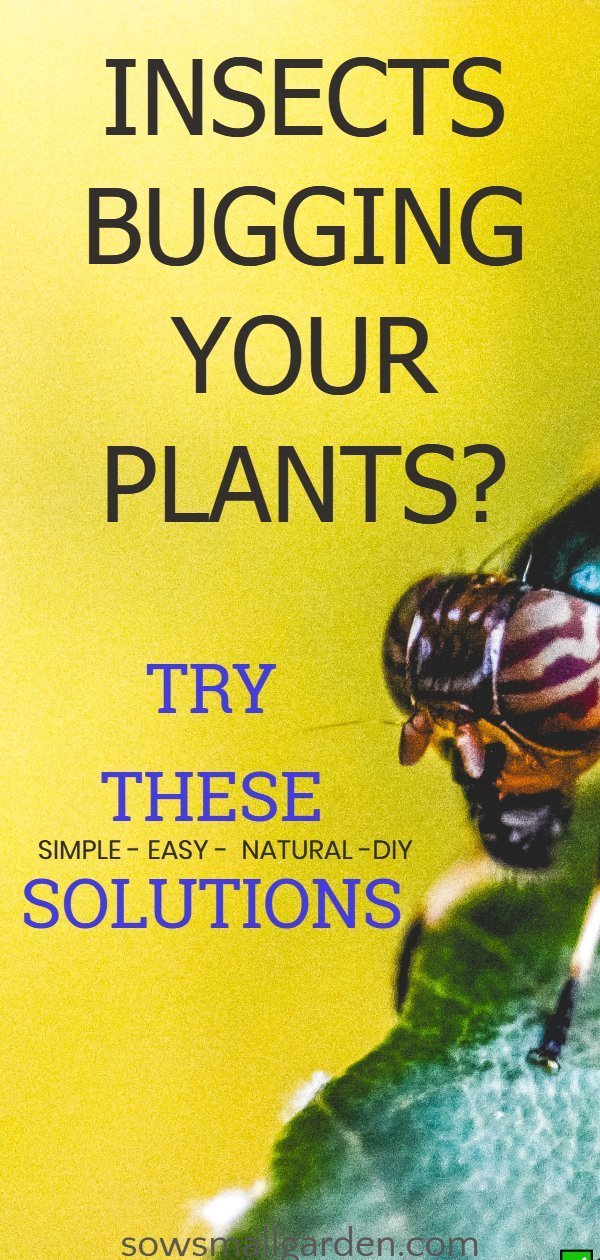
*This post may contain affiliate links. If you choose to purchase any of the products I have recommended, I may receive a commission at no cost to you.
In case you are not into insect pests DIY and want a quick solution:
✅ This organic product will take care of the majority of insect problems in your garden and home.
15 simple DIY ways to get rid of bugs on plants naturally
#1 Strong stream of water
Try the simplest thing first – hose them down. A strong stream of water will knock off aphids and a majority of other insects. Do this in the morning, in order for the plants to have a chance to dry up and not develop fungus.
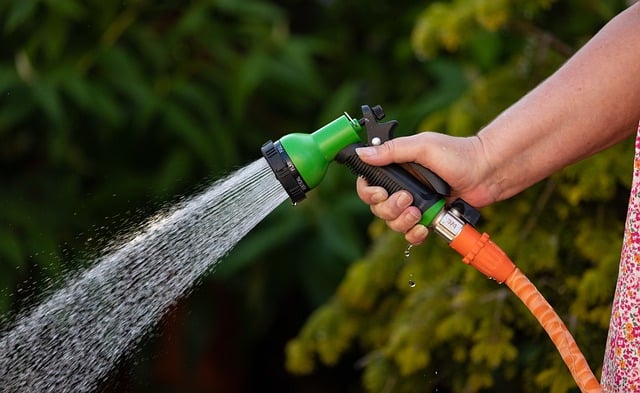
#2 Manual control
Get a small bucket of a soapy water ready. While wearing disposable gloves – pick the bugs and caterpillars from the plants and drop them into the bucket.
Alternatively, you can lightly shake or knock on the plant keeping the bucket under it. Pests will fall into the soapy water and drown.
#3 Crushed eggshells
Sprinkle crushed eggshells on the top of the soil around plants to protect them from slugs, cutworms, and ants.
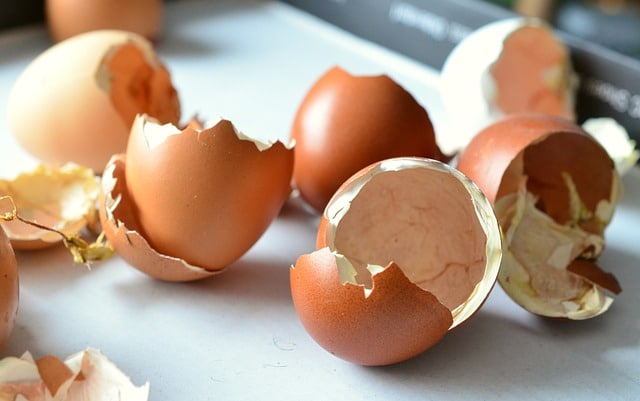
Wonder about other uses of eggshells in the garden?
Read related How to make soil fertile naturally article.
#4 Ground pepper
Repel cabbage and onion maggot flies from laying eggs at the base of the plants by sprinkling ground black pepper, chili pepper or paprika on the top of the soil around your plants. This should deter rabbits from your garden too.
#5 Flour with pepper
To protect cabbage and other brassicas (kale, collard, broccoli) from cabbage worms and loopers, mix half cup of flour with 1 tablespoon of ground cayenne pepper or paprika and dust over the plants. The pests will eat the mixture and die.
#6 Wood ashes
Wood ashes have a rough surface that will injure the skin of slugs and snails and cause them to dehydrate and die.
To protect your plants from slugs and snails, dust a 2 inch wide strip of wood ashes around plants. Be sure to keep ashes at least 2 inches away from the stem of the plant, otherwise the plant might get burn due to the strong alkalinity of wood ash.
#7 Paper towels or toilet paper tubes
To shield your plants from cutworms, use a barrier made of paper towels or toilet paper tube. Alternatively, you can cut both ends of a soup can with a can opener and use it as a protective collar around the base of the plant.
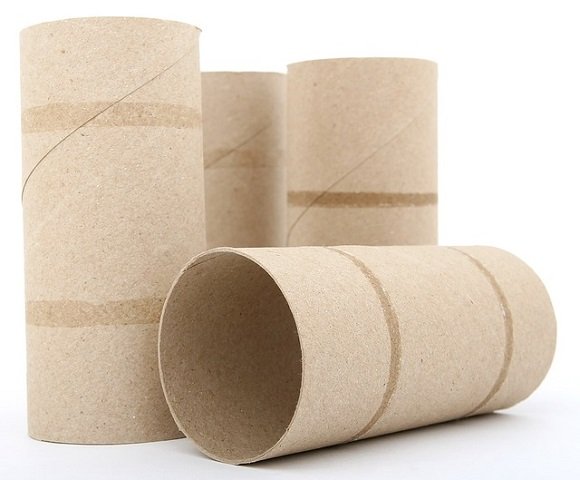
Cutworms feed on stems of young plants at or slightly below the soil surface. They attack a variety of plants like cabbage and other crucifers, carrot, celery, corn, lettuce, peas, peppers, potatoes, asparagus, beans, and tomatoes.
By placing the cardboard tube around plants in a way that one end of the tube is pushed a few inches into the soil and the other end remains several inches above the ground, should protect your plants from most species of cutworms.
You can put a paper tube collar over the young transplant right after planting and press it into the ground . But if your transplant is large – slip a collar on the stem (from the root side) before transplanting, and after the plant is in the soil – press the collar down below the soil surface.
#8 Garlic
According to Jerry Baker, you can destroy about any kind of insect pest by using garlic oil spray.
You can buy Durkee liquid garlic to use in the spray, or make garlic oil by yourself.
To produce garlic oil at home, mix 1 minced whole bulb of garlic with one cup of vegetable oil in a glass jar, close it tightly and keep in the fridge. After 2 days strain the solids and your garlic oil is ready!
Store garlic oil in the refrigerator in a glass container.
Homemade bug spray for vegetable plants
- 3 tablespoons of homemade garlic oil
- 3 drops of dishwashing liquid
- 1 quart of water
To make bug spray: combine all ingredients in a hand sprayer, shake to mix them well, and apply the mixture directly to the pests.
Note: if you are using Durkee liquid garlic – 1 tablespoon is enough for this spray.
#9 Beer or yeast
To combat snails in your strawberries or hostas place any kind of container: saucer, tin can, screw-on lid from a jar and fill it with beer. Wait for slugs come to the party, get drunk and get trapped.

Because the actual slug attractant in the beer is the yeast, you can place yest by itself (or a mixture of yeast with honey) to attract and trap the snails.
Learn more about slugs and 10 common garden pests.
#10 Dish washing soap (avoid antibacterial soap)
In a spray bottle mix 2 cups of water and 1 tablespoon of dish soap and spray plants affected by aphids, mealybugs, whiteflies, thrips, and spider mites. The soap should kill soft bodied insects by breaking down their cuticle.
Remember that while spraying insects, you are spraying your plant too, so the kind of dish soap you are using should be taken into consideration. Do not use antibacterial soap or degreaser soap.
It is a good idea to spot treat a plant and wait 24 hours to be sure that the plant itself is not affected by the spray.
✅ This soap is the best one to use for destroying aphids. It also contains peppermint essential oil which, according to studies, is very effective for pest control
#11 Grapefruit or orange rinds
Use rind of grapefruit or orange to lure snails and slugs away from your plants. Snails like to hide in dark moist places, so when they gather inside the “citrus rind home” – just pick it up and dispose of it.
Do you know that you can use citrus peel to imrove your soil too? Learn more in How to make soil fertile article.
Also, citrus peelings will repel cats from your garden.
#12 Plants that keep bugs away
Grow plants with insect repelling properties: marigolds, peppermint, spearmint, catnip, basil, thyme, rosemary, nasturtium, sage, oregano, lemon balm around your garden to keep unwanted bugs away.
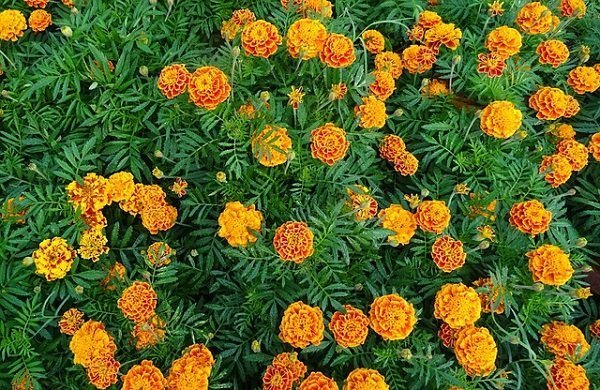
French marigold will not only repel insects from your edible plants, but it will decorate your garden too.
Or you can place insect-repelling plants more strategically.
For example, plant:
- garlic close to beans to repel bean beetles, or near cabbage to protect it from the cabbage looper
- basil near asparagus to ward off asparagus beetles, or near carrots to shield it from carrot flies
- catnip near cabbage to protect it from cabbage looper, or near squash to repel squash bugs
- onion near swiss chard to repel aphids
- cilantro near potato to deter potato beetles
- nasturtium near cucumbers to deter cucumber beetles
I must warn though, that the mentioned insect repelling plants from the mint family easily reseed themselves and can become quite invasive in your garden, which brings us to the next suggestion.
#13 Peppermint and spearmint essential oil
Peppermint essential oil will repel ants, aphids, flies, beetles, caterpillars, gnats, spiders, and even your cat or dog from digging in your garden.
Peppermint (Minta piperita) Essential Oil – can be used for your body, your home and your garden.
Cornell.edu paper states:
“ As a pesticide, the primary active ingredient (of peppermint), menthol, has biocidal properties and is effective at controlling mites, mosquito larvae, and various other pests. It also has repellent properties to insects, dogs, and cats”.
Spearmint essential oil can be used as pesticide too. This research mentions, “While peppermint (Mentha piperita) repels ants, flies, lice and moths, Spearmint (Mentha spicata) and basil (Ocimumbasilicum) are also effective in warding off flies.”
To use essential oils as insect repellent you will need to combine 10 drops of peppermint or spearmint essential oil with 1 quart of distilled water in a spray bottle. Shake to mix together and spray pests on your plants with it.
If you care to dive in depth into scientific studies about other essential oils for management of insect pests, read this.
#14 Toads and frogs
The best thing you can do for destroying plant munching bugs naturally is to attract frogs and toads to your garden. Frogs and toads will eat slugs, snails, grubs, cucumber beetles, ants, flies, pillbugs, cutworms,earwigs and grasshoppers.

According to Gardens Alive “a single toad will eat tens of thousands of pests in a single season, typically consuming two to three times its weight”.
If you have a water feature in your backyard – I bet you have plenty of frogs and toads already.
Another thing that you can do to attract toads is to make a toad house from an old planter to provide shade and shelter for a toad. Or purchase a decorative ceramic toad and frog house that for sure will beautify your garden and will make a frog or toad to come back to its home year after year.
#15 Plant dill to attract beneficial insects
I would recommend planting lots of dill to attract beneficial insects: ladybugs, aphid midges, and green lacewings, so they can eat up all the aphids destroying your plants.
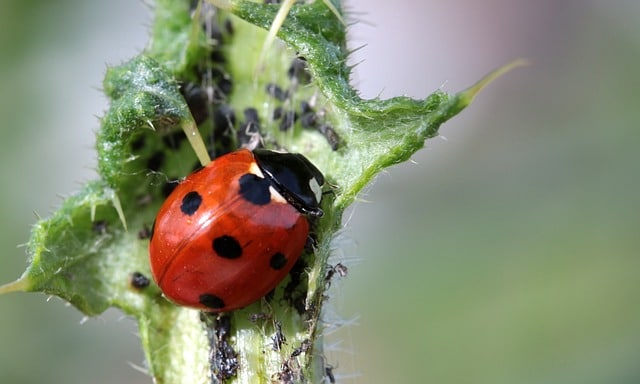
If you sow dill near cabbage family plants, it will attract beneficial parasitic wasps that will protect your plants from cabbage moth worms.
Want to learn how to grow dill and other culinary and healing herbs? Click on the image below and get Garden Lady’s free beautiful full color Herbs eBook.
Related reading:
Learn about the safest commercial organic pesticides – best insecticide for vegetable gardens, and best organic insecticide for fruit trees – that I personally use.
Get more tips on how to identify and control garden pests.
Try Top 9 cat repellent plants to keep cats out of your garden.
Discover more tips on Pest Control
Explore more gardening tips on growing and maintaining your garden.
Final thoughts on Do It Yourself natural insect pest control
There are simple and cost effective ways to protect your garden from plant destroying bugs.
Some of them you can apply right away: hose bugs down, drown them in soapy water, make traps, barriers, and sprays from the things you most likely already have at home.
Some of the described methods require planning in advance.
These methods include:1) growing insect repelling plants
2) attracting beneficial insects and critters to feed on bad bugs.
In the long run planting insect repelling plants and attracting beneficial insects are more effective in fighting bad guys, bring more lasting results, and do not require more work from you after they are established.
So, during the garden planning process for the next year, please take into account long term solutions for keeping bugs from eating your plants.
Which organic DIY solution to garden pest problem do you use? Share in the comments!
And if you found this article useful – be so kind to share with friends.
You have read:


